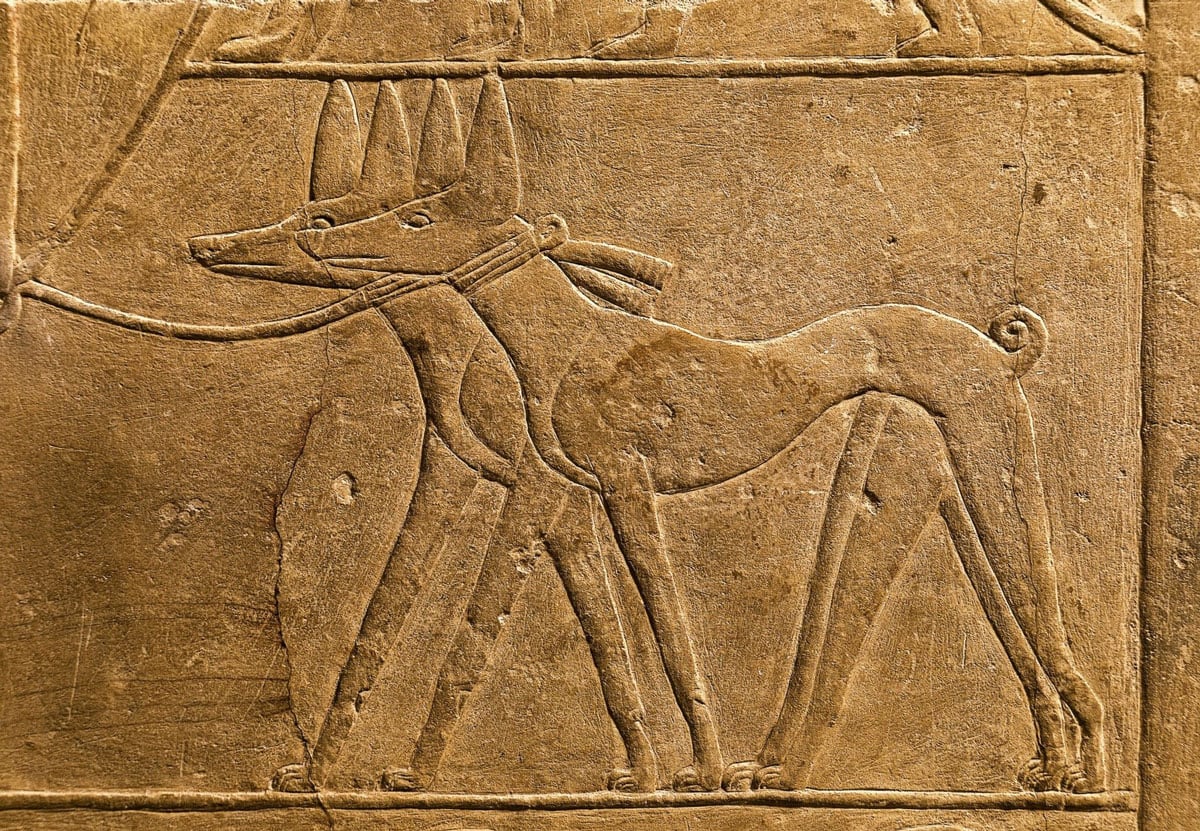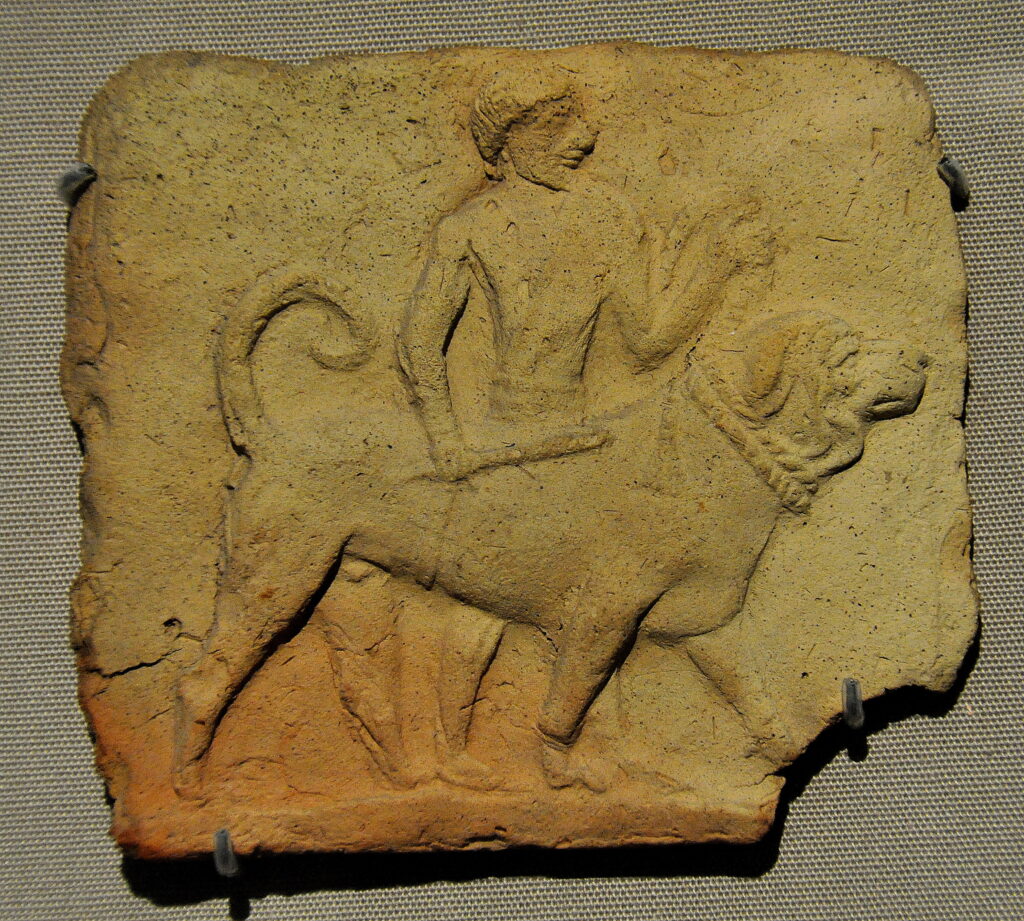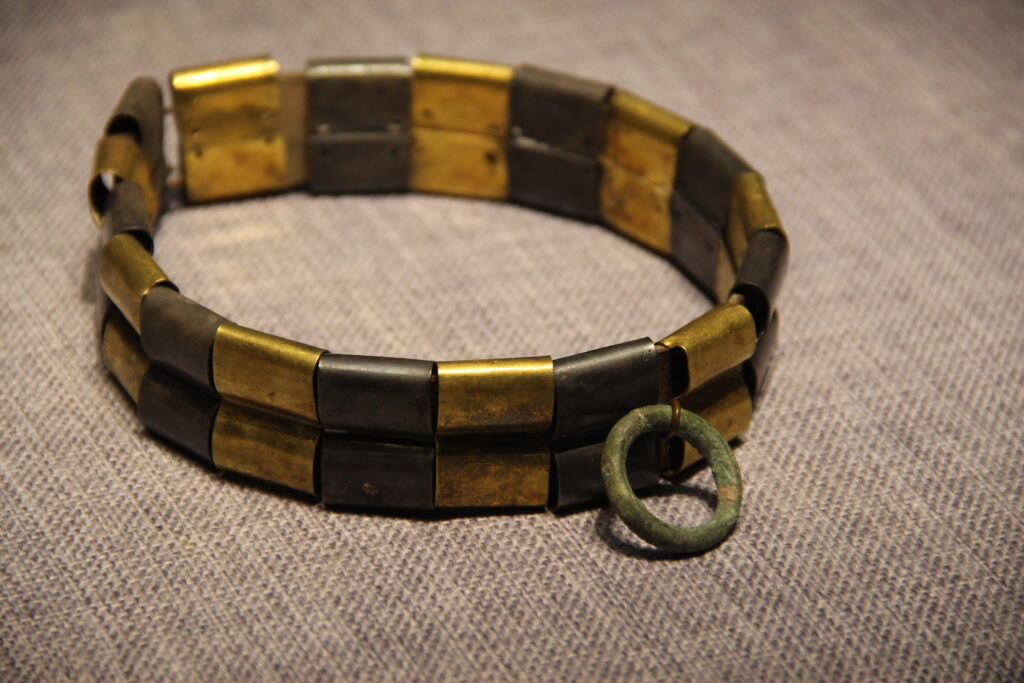🐕 A Brief History of the Dog Collar

The dog collar—today seen as a symbol of love, ownership, and fashion—has a history that stretches back thousands of years. Though it might seem like a simple accessory, the collar reflects our evolving relationship with dogs: from hunters and guardians to companions and family. Across civilizations, the collar has served not only as a tool of control but also as a mark of identity, social status, and even spirituality.

🏺 Ancient Origins: Function Meets Faith
The earliest known dog collars date back to ancient Mesopotamia, around 3,000 BCE. Artwork from this era—engraved on stone and painted on pottery—depicts dogs on leashes, suggesting the use of collars for control and companionship. These early collars were likely made from woven materials, leather, or simple cords. Dogs in Mesopotamia were used for hunting and guarding, but also held spiritual significance, associated with gods like Gula, the goddess of healing.
In Ancient Egypt, dogs were highly regarded both for their utility and symbolism. Archaeological discoveries from tombs dating to the New Kingdom (circa 1550–1070 BCE) reveal dogs buried with their owners, wearing finely crafted collars. These collars were often made of leather and adorned with bronze or copper studs, indicating a blend of function and prestige. In some cases, collars even bore inscriptions with the dog’s name and its owner’s status—a mark of how deeply embedded dogs were in elite households.
⚔️ Greece and Rome: Protection and Identity
As dogs spread through ancient Greece and Rome, collars evolved further. In Greece, collars made from heavy leather were worn by sheepdogs and hunting dogs. Some had spikes, designed not for aggression but for protection—against wolves or other predators during fieldwork. The spiked collar, often referred to as a mellum, was an essential tool for safeguarding livestock and loyal canine workers.
Romans advanced the concept of the collar by introducing engraved nameplates or plaques. These bore messages such as “Hold me and return me to my master,” an early version of the modern ID tag. Roman dog collars were also status symbols—well-to-do families had personalized or decorated collars for their pets, particularly for small lapdogs favored by aristocratic women.

👑 Medieval and Renaissance Europe: Status and Symbolism
In medieval Europe, collars became markers of social status, particularly among the nobility. Noblemen and women owned dogs bred for hunting or courtly companionship, and their collars reflected this. Made from leather, silk, or velvet, these collars were decorated with gilded edges, embroidery, and jewels. Collars of guard dogs, in contrast, were spiked or riveted, designed for protection rather than appearance.
By the Renaissance, the dog collar had fully entered the realm of personal fashion and symbolism. Collars were engraved with coats of arms or poetic phrases. Some included bells or metal tags to alert owners of their dog’s whereabouts. Dogs were now not just workers or guardians, but companions, fashion statements, and even part of public pageantry.
🕰️ The 18th and 19th Centuries: Control, Class, and Companionship
During the Enlightenment and into the Industrial Age, dogs increasingly became household pets, especially in European and American middle-class homes. Collars grew more uniform, with engraved metal tags used for ownership identification. In urban centers, many collars included padlocks to prevent dog theft—a common problem at the time.
Materials varied based on class: the working class used rope or thick leather, while the wealthy continued to use decorated collars with brass plates or silver embellishments. The idea of animal registration took root in cities, and the collar became not just a symbol of control or love—but of legal ownership.
🐶 Modern Era: Innovation and Expression
In the 20th century, with the rise of mass production and new materials, the dog collar became widely available in rubber, nylon, and plastic in addition to leather. Designs expanded—from basic black to bright colors, patterns, studs, and rhinestones. Personalized collars with the dog’s name, medical needs, or microchip info became the norm.
Today, dog collars reflect a fusion of practicality and personal style. Some serve high-tech functions like GPS tracking, LED lighting for night walks, or smart sensors that monitor health and activity. Others are crafted from eco-friendly materials or customized by luxury designers.

🧾 Conclusion: More Than Just a Strap
The story of the dog collar is a reflection of humanity’s evolving bond with dogs. From ancient hunters and sacred guardians to pampered pets and loyal companions, the collar has always served as a link between dog and human—physically and symbolically. Whether simple or ornate, spiked or velvet-lined, the dog collar tells us not just about dogs, but about us: our values, our society, and our enduring friendship with the animal that has walked beside us for thousands of years.




